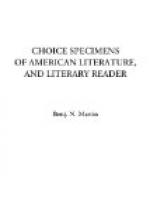Those at Cincinnati, for example, exhibit so few of the characters of a defensive work, that General Wayne, upon attentively surveying them in 1794, was of opinion that they were not designed for that purpose. It was from the examination of valley-works only, that Bishop Madison was led to deny that the remains of the western country were ever intended for defence, and to conclude that they were enclosures for permanent residence. It would be precipitate to assert that the relics found in the valleys were for this purpose, and those of the uplands for defence. But while it is certain that the latter were military posts, it seems highly probable that the former were for ordinary abode in times of peace. They were towns and the seats of chiefs, whose perishable parts have crumbled into earth, and disappeared with the generations which formed them. Many of them might have been calculated for defence, as well as for habitations; but the latter must have been the chief purpose for which they were erected. On the contrary, the hill-constructions, which are generally in the strongest military positions of the country, were designed solely for defence, in open and vigorous war.
[Footnote 65: A native of New Jersey, who was taken when very young, to the West, where he became distinguished as a medical professor and practitioner. His recollections and sketches are very valuable.]
* * * * *
=_John Bachman,[66] 1790-1873._=
From “The Quadrupeds of North America.”
=_262._= THE OPOSSUM.
We can imagine to ourselves the surprise with which the opossum was regarded by Europeans, when they first saw it. Scarcely anything was known of the marsupial animals, as New Holland had not as yet opened its unrivalled stores of singularities to astonish the world. Here was a strange animal, with the head and ears of the pig, sometimes hanging on the limb of a tree, and occasionally swinging like the monkey by the tail. Around that prehensile appendage a dozen sharp-nosed, sleek-headed young had entwined their own tails, and were sitting on the mother’s back. The astonished traveller approaches this extraordinary compound of an animal, and touches it cautiously with a stick. Instantly it seems to be struck with some mortal disease: its eyes close, it falls to the ground, ceases to move, and appears to be dead. He turns it on its back, and perceives on its stomach a strange, apparently artificial opening. He puts his fingers into the extraordinary pocket, and lo, another brood of a dozen or more young, scarcely larger than a pea, are hanging in clusters on the teats. In pulling the creature about, in great amazement, he suddenly receives a gripe on the hand; the twinkling of the half-closed eye, and the breathing of the creature, evince that it is not dead: and he adds a new term to the vocabulary of his language, that of “playing possum.”




